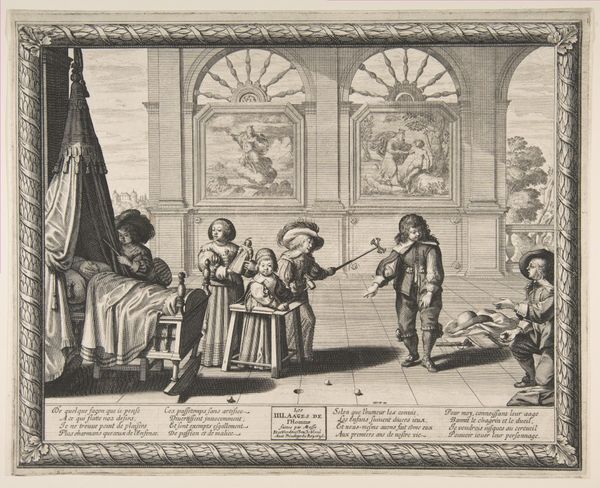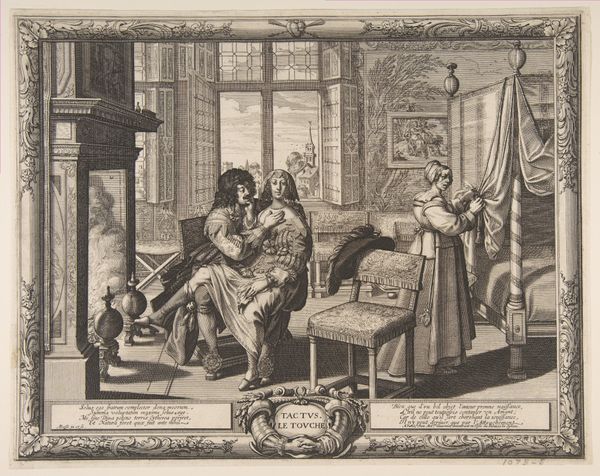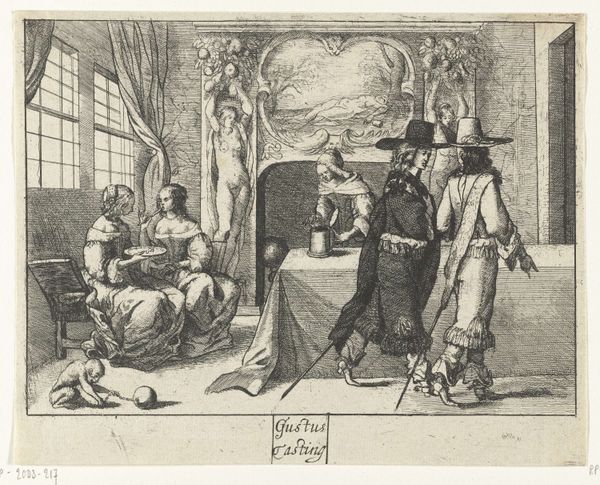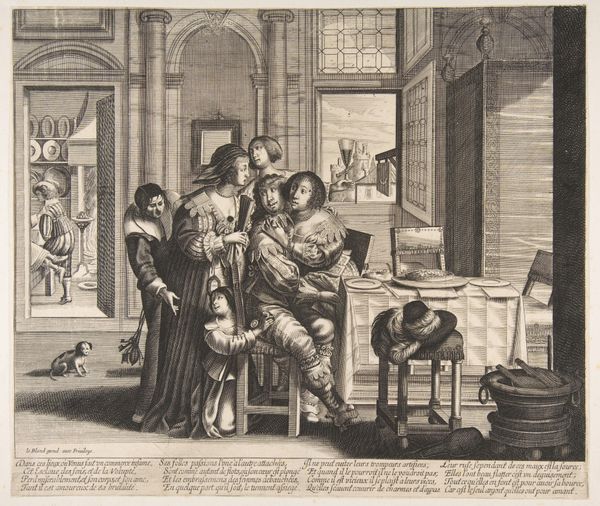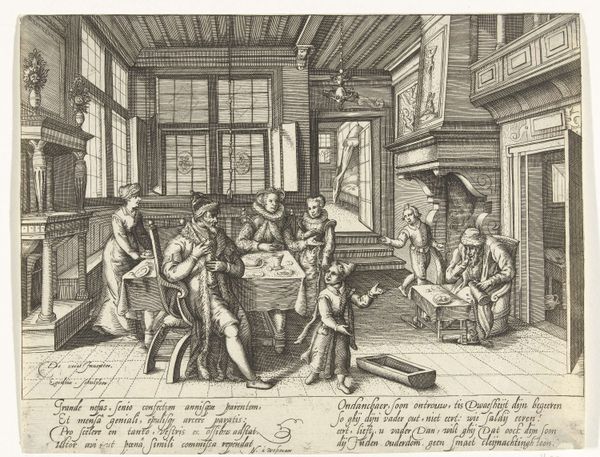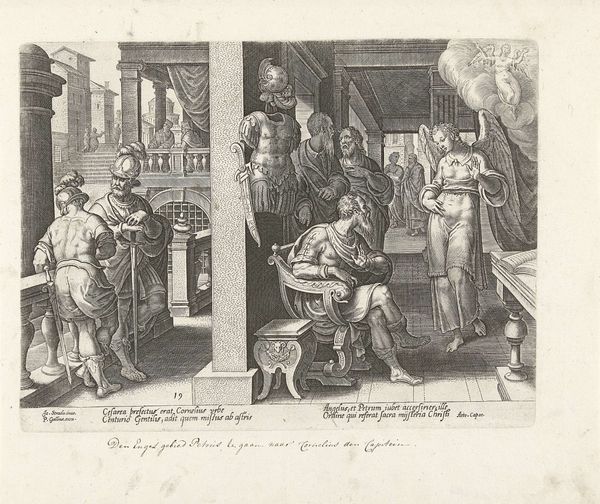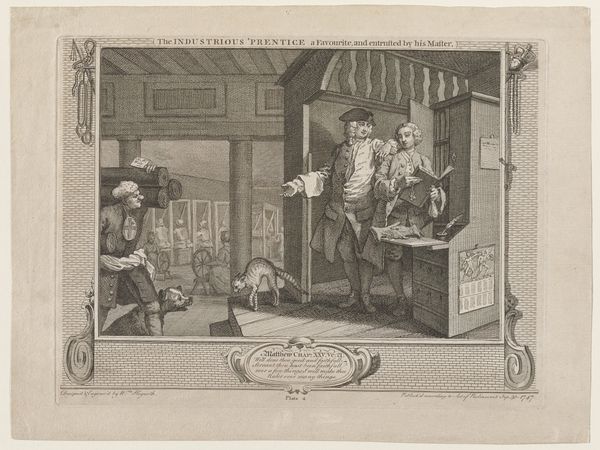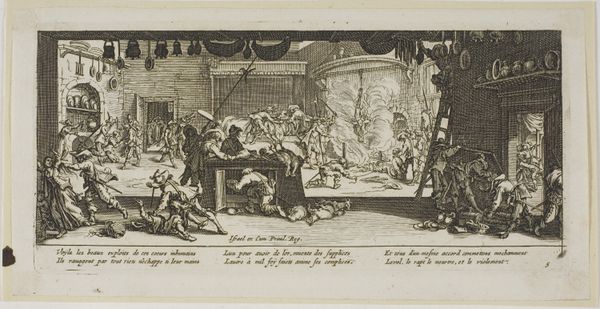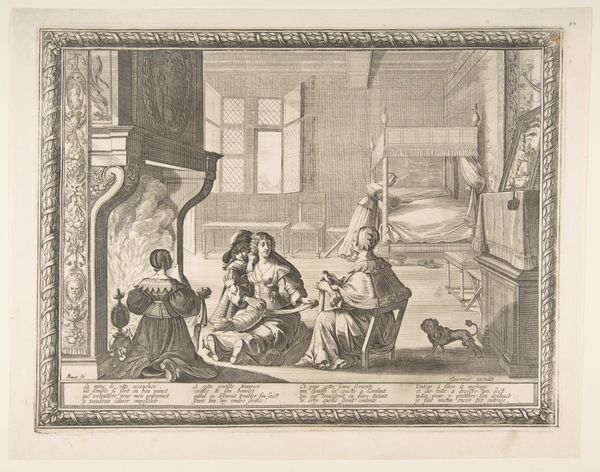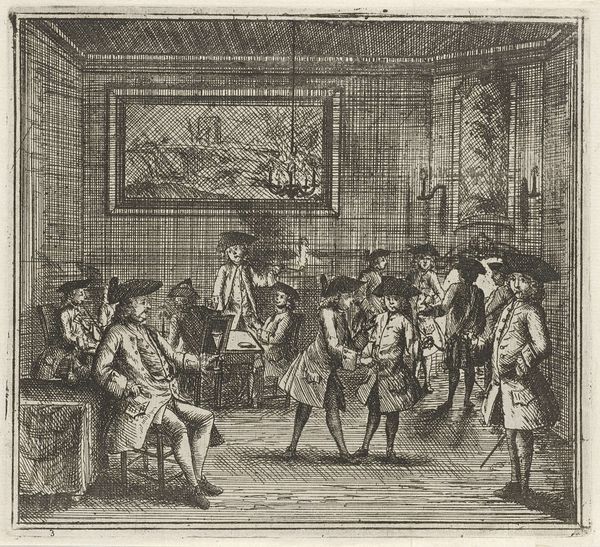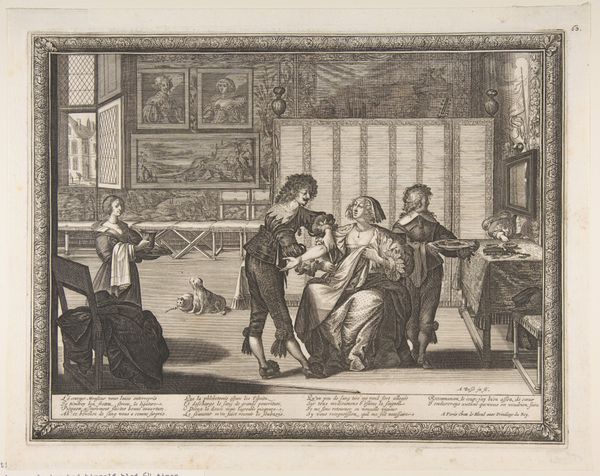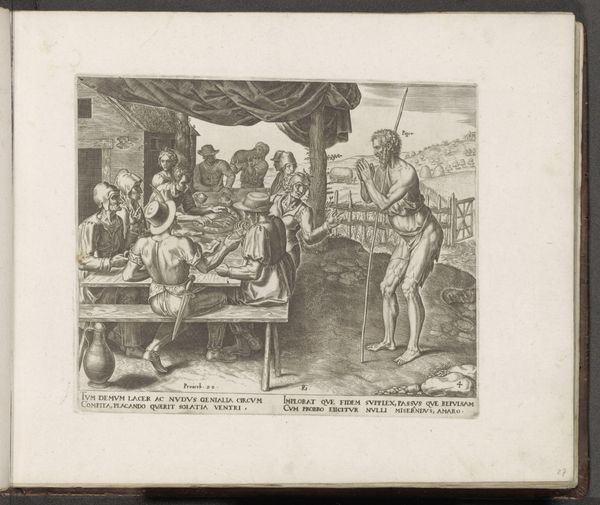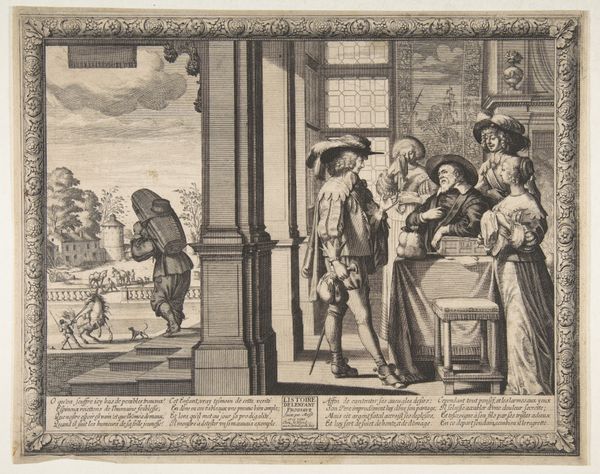
drawing, print, engraving
#
portrait
#
drawing
#
baroque
# print
#
genre-painting
#
engraving
Dimensions: Sheet: 11 9/16 × 14 5/8 in. (29.3 × 37.1 cm) Plate: 10 1/16 x 12 13/16 in. (25.5 x 32.6 cm)
Copyright: Public Domain
Curator: This engaging print, known as "The Painter," comes to us from Abraham Bosse, and dates roughly between 1637 and 1647. Currently residing at the Metropolitan Museum of Art, it's a window into the Baroque era, rendered with striking detail through engraving. Editor: It has such clarity, doesn’t it? The rendering of space and the balance of figures is immediately appealing. The figures command attention while they exist in a larger composition with depth. Curator: Absolutely. Bosse, though trained as a painter, really made his mark through prints. Here, we see not just an artist at work but a depiction of artistic labor in 17th-century France. Note the contrast, not only of light, but of status shown in clothing! Editor: Precisely. And within the composition we note the subject matter of other paintings surrounding the painter—an exercise in meta representation. But let’s dwell on Bosse’s technique for a moment. Curator: A valid point. While we appreciate it for its clarity now, the engraving would've served purposes far beyond pure aesthetics. Prints like these allowed for widespread dissemination of imagery and ideas—serving didactic and propaganda-oriented objectives. Editor: I see it—and I still think that clarity of form enhances this spread of ideas. Curator: It begs the question, who was the intended audience? While the educated elite would have certainly been among them, I would bet that, by sheer volume and availability, prints helped cultivate an appetite for art amongst wider segments of the urban population. It democratized the image, didn't it? Editor: Yes—as well as introducing art into a commercial framework that is still important to us today. To see the printing of art as central to its social impact reveals the revolutionary effect of prints on society. It also leads us back to examining Bosse’s choices here! Curator: It certainly does. Ultimately, whether viewed through the lens of class dynamics or formal arrangement, "The Painter" captures a pivotal moment in the history of art and society. Editor: It certainly stimulates an exploration of the social milieu from whence art stems. It's a conversation that could carry on much further!
Comments
No comments
Be the first to comment and join the conversation on the ultimate creative platform.
